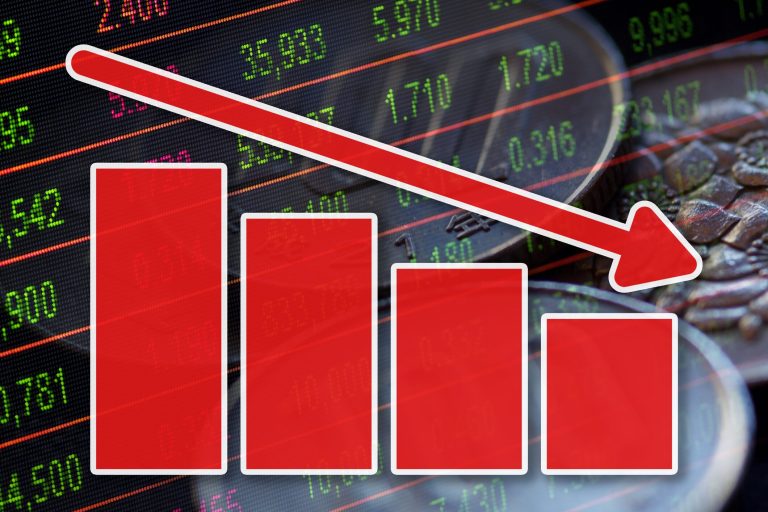European markets got off to a slow start to the week with some solid gains for the likes of the DAX and CAC 40, while the FTSE100 lagged due to sharp declines in oil prices.
The weakness in oil prices is most welcome given the direct feed through into petrol pump prices, with diesel and unleaded, both of which are now below the levels they were prior to the Russian invasion of Ukraine.
US markets also underwent a strong session with the Nasdaq 100 continuing to lead the way with another 14-month high, with the energy sector acting as lag here as well.
The fall in diesel prices is particularly welcome for freight and business users given the high weighting it has on their transport and other logistical costs.
One of the more notable trends we’ve seen in recent months has been how quickly headline inflation in the US has also been slowing.
In June last year US CPI peaked at 9.1% and has been on a downward path ever since. This downward trend has accelerated in the last few months, after ending last year at 6.5%. In April, US CPI fell to 4.9% and a 2-year low, while core prices slowed to 5.5%.
The sharp falls in energy prices, as well as other commodity prices have accelerated this trend even as food prices have remained sticky.
Nonetheless the slowdown in headline inflation has prompted speculation that the Federal Reserve might be minded to keep rates on hold tomorrow, having raised rates at every meeting since March last year.
As far as the doves are concerned the fact that factory gate or PPI prices have been falling sharply supports the idea that we may see a pause tomorrow given that core PPI prices have fallen to 3.2%, and could fall below 3% tomorrow, having been as high as 9.7% over a year ago.
Today’s May CPI numbers are expected to see another big slowdown in the headline number to 4.1%, with core prices expected to slow from 5.5% to 5.3%. It is in core prices that we might see some nervousness for markets ahead of tomorrow’s CPI numbers. If we don’t see a slowdown in core prices, then that might introduce some nervousness that might prompt the Fed to hike again tomorrow instead of the pause that is currently being priced.
Before we get to this afternoon’s US inflation numbers, we look set to see a positive European open after yesterday’s move higher in the US, which has seen the Nikkei 225 post a new 33 year high.
We also have the small matter of the latest unemployment and wages numbers for the UK economy at a time when expectations are for another rate hike from the Bank of England when they meet next week.
While the problems in the UK economy are well documented one of the factors that has tempered the worst effects of the cost-of living crisis has been the resilience of the labour market, with unemployment which is still close to 40-year lows, although in the 3 months to March we did see it tick higher to 3.9%, having been as low as 3.5% back in August last year, and could well hit 4% later today.
While unemployment has been edging higher so have wages which rose to 6.7% in March the highest levels in over 30 years outside of the pandemic.
This resilience in wages has prompted concerns of a wage/price spiral on the part of some economists, and while some would acknowledge that this is a real concern the real factor driving sticky wages is higher prices and food price inflation.
It’s not wages driving prices, but prices driving wages when you have grocery price inflation at 17.2%.
You can hardly blame people for asking for higher wages if they can’t afford to eat properly, and the failure to spot this inflationary surge early enough lies squarely with the Bank of England. This week’s numbers for April are expected to see wages rise further, from 6.7% to 6.9%, and unemployment to come in at 4%.
EUR/USD – had another attempt at the 1.0800 area before sliding back, with main resistance behind that at the 1.0820/30 area, which needs to break to kick on higher. We still have support back at the recent lows at 1.0635.
GBP/USD – finding resistance at the 1.2600 area for the moment with trend line resistance behind that from the 2021 highs currently at 1.2630. This, along with the May highs at 1.2680 is a key barrier for a move towards the 1.3000 area. We have support at 1.2450.
EUR/GBP – posted a key day reversal yesterday from the 0.8540 area and 10-month lows, which could prompt a rebound back to the 0.8650 area initially. The 0.8540 area now becomes a key support which could delay a move towards 0.8350.
USD/JPY – currently looking toppy above the 140.00 area but needs a break below 138.30 to suggest a return to the 137.00 area. The main resistance remains at 140.95 area.
Disclaimer: CMC Markets is an execution-only service provider. The material (whether or not it states any opinions) is for general information purposes only, and does not take into account your personal circumstances or objectives. Nothing in this material is (or should be considered to be) financial, investment or other advice on which reliance should be placed. No opinion given in the material constitutes a recommendation by CMC Markets or the author that any particular investment, security, transaction or investment strategy is suitable for any specific person. The material has not been prepared in accordance with legal requirements designed to promote the independence of investment research. Although we are not specifically prevented from dealing before providing this material, we do not seek to take advantage of the material prior to its dissemination.

